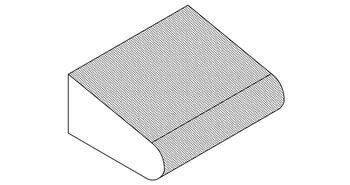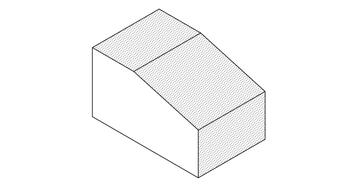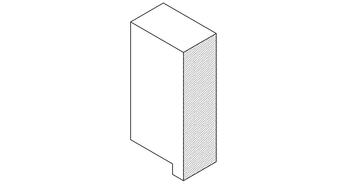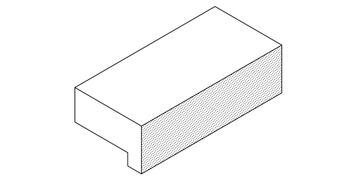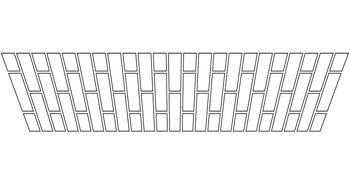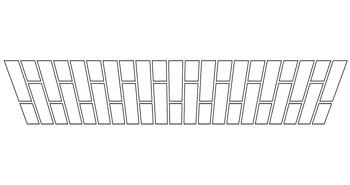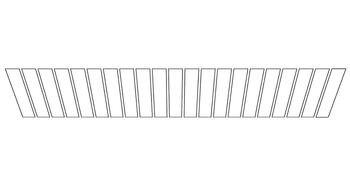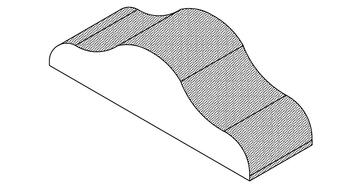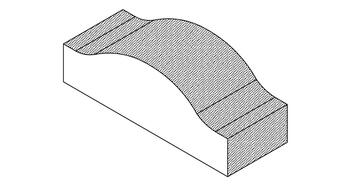Status message
Debug: Image path is empty. in Drupal\twig_tweak\TwigTweakExtension::imageStyleFilter() (line 500 of modules/contrib/twig_tweak/src/TwigTweakExtension.php).
Drupal\twig_tweak\TwigTweakExtension::imageStyleFilter() (Line: 52) __TwigTemplate_6be8baeb49eaec2a465ef9cc70d22140->doDisplay() (Line: 387) Twig\Template->yield() (Line: 47) __TwigTemplate_93b0ac9393484fe9c83a2e3a20921eff->doDisplay() (Line: 387) Twig\Template->yield() (Line: 343) Twig\Template->display() (Line: 358) Twig\Template->render() (Line: 35) Twig\TemplateWrapper->render() (Line: 33) twig_render_template() (Line: 348) Drupal\Core\Theme\ThemeManager->render() (Line: 491) Drupal\Core\Render\Renderer->doRender() (Line: 248) Drupal\Core\Render\Renderer->render() (Line: 1204) Drupal\views\Plugin\views\field\FieldPluginBase->advancedRender() (Line: 238) template_preprocess_views_view_field() call_user_func_array() (Line: 261) Drupal\Core\Theme\ThemeManager->render() (Line: 491) Drupal\Core\Render\Renderer->doRender() (Line: 248) Drupal\Core\Render\Renderer->render() (Line: 1796) Drupal\views\Plugin\views\field\FieldPluginBase->theme() (Line: 769) Drupal\views\Plugin\views\style\StylePluginBase->elementPreRenderRow() call_user_func_array() (Line: 113) Drupal\Core\Render\Renderer->doTrustedCallback() (Line: 870) Drupal\Core\Render\Renderer->doCallback() (Line: 432) Drupal\Core\Render\Renderer->doRender() (Line: 248) Drupal\Core\Render\Renderer->render() (Line: 708) Drupal\views\Plugin\views\style\StylePluginBase->renderFields() (Line: 574) Drupal\views\Plugin\views\style\StylePluginBase->renderGrouping() (Line: 462) Drupal\views\Plugin\views\style\StylePluginBase->render() (Line: 2177) Drupal\views\Plugin\views\display\DisplayPluginBase->render() (Line: 1593) Drupal\views\ViewExecutable->render() (Line: 201) Drupal\views\Plugin\views\display\Page->execute() (Line: 1690) Drupal\views\ViewExecutable->executeDisplay() (Line: 81) Drupal\views\Element\View::preRenderViewElement() call_user_func_array() (Line: 113) Drupal\Core\Render\Renderer->doTrustedCallback() (Line: 870) Drupal\Core\Render\Renderer->doCallback() (Line: 432) Drupal\Core\Render\Renderer->doRender() (Line: 504) Drupal\Core\Render\Renderer->doRender() (Line: 248) Drupal\Core\Render\Renderer->render() (Line: 484) Drupal\Core\Template\TwigExtension->escapeFilter() (Line: 84) __TwigTemplate_7e5c25355d74b4d06aa29ae3139fd8c7->doDisplay() (Line: 387) Twig\Template->yield() (Line: 343) Twig\Template->display() (Line: 358) Twig\Template->render() (Line: 35) Twig\TemplateWrapper->render() (Line: 33) twig_render_template() (Line: 348) Drupal\Core\Theme\ThemeManager->render() (Line: 491) Drupal\Core\Render\Renderer->doRender() (Line: 504) Drupal\Core\Render\Renderer->doRender() (Line: 248) Drupal\Core\Render\Renderer->render() (Line: 484) Drupal\Core\Template\TwigExtension->escapeFilter() (Line: 84) __TwigTemplate_57f4cfbe25d1011482bc3aa76fc30547->block_content() (Line: 431) Twig\Template->yieldBlock() (Line: 68) __TwigTemplate_57f4cfbe25d1011482bc3aa76fc30547->block_paragraph() (Line: 431) Twig\Template->yieldBlock() (Line: 51) __TwigTemplate_57f4cfbe25d1011482bc3aa76fc30547->doDisplay() (Line: 387) Twig\Template->yield() (Line: 343) Twig\Template->display() (Line: 358) Twig\Template->render() (Line: 35) Twig\TemplateWrapper->render() (Line: 33) twig_render_template() (Line: 348) Drupal\Core\Theme\ThemeManager->render() (Line: 491) Drupal\Core\Render\Renderer->doRender() (Line: 248) Drupal\Core\Render\Renderer->render() (Line: 484) Drupal\Core\Template\TwigExtension->escapeFilter() (Line: 64) __TwigTemplate_7e5c25355d74b4d06aa29ae3139fd8c7->doDisplay() (Line: 387) Twig\Template->yield() (Line: 343) Twig\Template->display() (Line: 358) Twig\Template->render() (Line: 35) Twig\TemplateWrapper->render() (Line: 33) twig_render_template() (Line: 348) Drupal\Core\Theme\ThemeManager->render() (Line: 491) Drupal\Core\Render\Renderer->doRender() (Line: 504) Drupal\Core\Render\Renderer->doRender() (Line: 248) Drupal\Core\Render\Renderer->render() (Line: 484) Drupal\Core\Template\TwigExtension->escapeFilter() (Line: 105) __TwigTemplate_1054f55390fb32f6fc0c7e808c9360be->doDisplay() (Line: 387) Twig\Template->yield() (Line: 343) Twig\Template->display() (Line: 358) Twig\Template->render() (Line: 35) Twig\TemplateWrapper->render() (Line: 33) twig_render_template() (Line: 348) Drupal\Core\Theme\ThemeManager->render() (Line: 491) Drupal\Core\Render\Renderer->doRender() (Line: 248) Drupal\Core\Render\Renderer->render() (Line: 238) Drupal\Core\Render\MainContent\HtmlRenderer->Drupal\Core\Render\MainContent\{closure}() (Line: 638) Drupal\Core\Render\Renderer->executeInRenderContext() (Line: 231) Drupal\Core\Render\MainContent\HtmlRenderer->prepare() (Line: 128) Drupal\Core\Render\MainContent\HtmlRenderer->renderResponse() (Line: 90) Drupal\Core\EventSubscriber\MainContentViewSubscriber->onViewRenderArray() call_user_func() (Line: 111) Drupal\Component\EventDispatcher\ContainerAwareEventDispatcher->dispatch() (Line: 186) Symfony\Component\HttpKernel\HttpKernel->handleRaw() (Line: 76) Symfony\Component\HttpKernel\HttpKernel->handle() (Line: 53) Drupal\Core\StackMiddleware\Session->handle() (Line: 48) Drupal\Core\StackMiddleware\KernelPreHandle->handle() (Line: 28) Drupal\Core\StackMiddleware\ContentLength->handle() (Line: 32) Drupal\big_pipe\StackMiddleware\ContentLength->handle() (Line: 201) Drupal\page_cache\StackMiddleware\PageCache->fetch() (Line: 138) Drupal\page_cache\StackMiddleware\PageCache->lookup() (Line: 87) Drupal\page_cache\StackMiddleware\PageCache->handle() (Line: 48) Drupal\Core\StackMiddleware\ReverseProxyMiddleware->handle() (Line: 51) Drupal\Core\StackMiddleware\NegotiationMiddleware->handle() (Line: 36) Drupal\Core\StackMiddleware\AjaxPageState->handle() (Line: 51) Drupal\Core\StackMiddleware\StackedHttpKernel->handle() (Line: 741) Drupal\Core\DrupalKernel->handle() (Line: 19)Debug: Image path is empty. in Drupal\twig_tweak\TwigTweakExtension::imageStyleFilter() (line 500 of modules/contrib/twig_tweak/src/TwigTweakExtension.php).
Drupal\twig_tweak\TwigTweakExtension::imageStyleFilter() (Line: 52) __TwigTemplate_6be8baeb49eaec2a465ef9cc70d22140->doDisplay() (Line: 387) Twig\Template->yield() (Line: 47) __TwigTemplate_93b0ac9393484fe9c83a2e3a20921eff->doDisplay() (Line: 387) Twig\Template->yield() (Line: 343) Twig\Template->display() (Line: 358) Twig\Template->render() (Line: 35) Twig\TemplateWrapper->render() (Line: 33) twig_render_template() (Line: 348) Drupal\Core\Theme\ThemeManager->render() (Line: 491) Drupal\Core\Render\Renderer->doRender() (Line: 248) Drupal\Core\Render\Renderer->render() (Line: 1204) Drupal\views\Plugin\views\field\FieldPluginBase->advancedRender() (Line: 238) template_preprocess_views_view_field() call_user_func_array() (Line: 261) Drupal\Core\Theme\ThemeManager->render() (Line: 491) Drupal\Core\Render\Renderer->doRender() (Line: 248) Drupal\Core\Render\Renderer->render() (Line: 1796) Drupal\views\Plugin\views\field\FieldPluginBase->theme() (Line: 769) Drupal\views\Plugin\views\style\StylePluginBase->elementPreRenderRow() call_user_func_array() (Line: 113) Drupal\Core\Render\Renderer->doTrustedCallback() (Line: 870) Drupal\Core\Render\Renderer->doCallback() (Line: 432) Drupal\Core\Render\Renderer->doRender() (Line: 248) Drupal\Core\Render\Renderer->render() (Line: 708) Drupal\views\Plugin\views\style\StylePluginBase->renderFields() (Line: 574) Drupal\views\Plugin\views\style\StylePluginBase->renderGrouping() (Line: 462) Drupal\views\Plugin\views\style\StylePluginBase->render() (Line: 2177) Drupal\views\Plugin\views\display\DisplayPluginBase->render() (Line: 1593) Drupal\views\ViewExecutable->render() (Line: 201) Drupal\views\Plugin\views\display\Page->execute() (Line: 1690) Drupal\views\ViewExecutable->executeDisplay() (Line: 81) Drupal\views\Element\View::preRenderViewElement() call_user_func_array() (Line: 113) Drupal\Core\Render\Renderer->doTrustedCallback() (Line: 870) Drupal\Core\Render\Renderer->doCallback() (Line: 432) Drupal\Core\Render\Renderer->doRender() (Line: 504) Drupal\Core\Render\Renderer->doRender() (Line: 248) Drupal\Core\Render\Renderer->render() (Line: 484) Drupal\Core\Template\TwigExtension->escapeFilter() (Line: 84) __TwigTemplate_7e5c25355d74b4d06aa29ae3139fd8c7->doDisplay() (Line: 387) Twig\Template->yield() (Line: 343) Twig\Template->display() (Line: 358) Twig\Template->render() (Line: 35) Twig\TemplateWrapper->render() (Line: 33) twig_render_template() (Line: 348) Drupal\Core\Theme\ThemeManager->render() (Line: 491) Drupal\Core\Render\Renderer->doRender() (Line: 504) Drupal\Core\Render\Renderer->doRender() (Line: 248) Drupal\Core\Render\Renderer->render() (Line: 484) Drupal\Core\Template\TwigExtension->escapeFilter() (Line: 84) __TwigTemplate_57f4cfbe25d1011482bc3aa76fc30547->block_content() (Line: 431) Twig\Template->yieldBlock() (Line: 68) __TwigTemplate_57f4cfbe25d1011482bc3aa76fc30547->block_paragraph() (Line: 431) Twig\Template->yieldBlock() (Line: 51) __TwigTemplate_57f4cfbe25d1011482bc3aa76fc30547->doDisplay() (Line: 387) Twig\Template->yield() (Line: 343) Twig\Template->display() (Line: 358) Twig\Template->render() (Line: 35) Twig\TemplateWrapper->render() (Line: 33) twig_render_template() (Line: 348) Drupal\Core\Theme\ThemeManager->render() (Line: 491) Drupal\Core\Render\Renderer->doRender() (Line: 248) Drupal\Core\Render\Renderer->render() (Line: 484) Drupal\Core\Template\TwigExtension->escapeFilter() (Line: 64) __TwigTemplate_7e5c25355d74b4d06aa29ae3139fd8c7->doDisplay() (Line: 387) Twig\Template->yield() (Line: 343) Twig\Template->display() (Line: 358) Twig\Template->render() (Line: 35) Twig\TemplateWrapper->render() (Line: 33) twig_render_template() (Line: 348) Drupal\Core\Theme\ThemeManager->render() (Line: 491) Drupal\Core\Render\Renderer->doRender() (Line: 504) Drupal\Core\Render\Renderer->doRender() (Line: 248) Drupal\Core\Render\Renderer->render() (Line: 484) Drupal\Core\Template\TwigExtension->escapeFilter() (Line: 105) __TwigTemplate_1054f55390fb32f6fc0c7e808c9360be->doDisplay() (Line: 387) Twig\Template->yield() (Line: 343) Twig\Template->display() (Line: 358) Twig\Template->render() (Line: 35) Twig\TemplateWrapper->render() (Line: 33) twig_render_template() (Line: 348) Drupal\Core\Theme\ThemeManager->render() (Line: 491) Drupal\Core\Render\Renderer->doRender() (Line: 248) Drupal\Core\Render\Renderer->render() (Line: 238) Drupal\Core\Render\MainContent\HtmlRenderer->Drupal\Core\Render\MainContent\{closure}() (Line: 638) Drupal\Core\Render\Renderer->executeInRenderContext() (Line: 231) Drupal\Core\Render\MainContent\HtmlRenderer->prepare() (Line: 128) Drupal\Core\Render\MainContent\HtmlRenderer->renderResponse() (Line: 90) Drupal\Core\EventSubscriber\MainContentViewSubscriber->onViewRenderArray() call_user_func() (Line: 111) Drupal\Component\EventDispatcher\ContainerAwareEventDispatcher->dispatch() (Line: 186) Symfony\Component\HttpKernel\HttpKernel->handleRaw() (Line: 76) Symfony\Component\HttpKernel\HttpKernel->handle() (Line: 53) Drupal\Core\StackMiddleware\Session->handle() (Line: 48) Drupal\Core\StackMiddleware\KernelPreHandle->handle() (Line: 28) Drupal\Core\StackMiddleware\ContentLength->handle() (Line: 32) Drupal\big_pipe\StackMiddleware\ContentLength->handle() (Line: 201) Drupal\page_cache\StackMiddleware\PageCache->fetch() (Line: 138) Drupal\page_cache\StackMiddleware\PageCache->lookup() (Line: 87) Drupal\page_cache\StackMiddleware\PageCache->handle() (Line: 48) Drupal\Core\StackMiddleware\ReverseProxyMiddleware->handle() (Line: 51) Drupal\Core\StackMiddleware\NegotiationMiddleware->handle() (Line: 36) Drupal\Core\StackMiddleware\AjaxPageState->handle() (Line: 51) Drupal\Core\StackMiddleware\StackedHttpKernel->handle() (Line: 741) Drupal\Core\DrupalKernel->handle() (Line: 19)Debug: Image path is empty. in Drupal\twig_tweak\TwigTweakExtension::imageStyleFilter() (line 500 of modules/contrib/twig_tweak/src/TwigTweakExtension.php).
Drupal\twig_tweak\TwigTweakExtension::imageStyleFilter() (Line: 52) __TwigTemplate_6be8baeb49eaec2a465ef9cc70d22140->doDisplay() (Line: 387) Twig\Template->yield() (Line: 47) __TwigTemplate_93b0ac9393484fe9c83a2e3a20921eff->doDisplay() (Line: 387) Twig\Template->yield() (Line: 343) Twig\Template->display() (Line: 358) Twig\Template->render() (Line: 35) Twig\TemplateWrapper->render() (Line: 33) twig_render_template() (Line: 348) Drupal\Core\Theme\ThemeManager->render() (Line: 491) Drupal\Core\Render\Renderer->doRender() (Line: 248) Drupal\Core\Render\Renderer->render() (Line: 1204) Drupal\views\Plugin\views\field\FieldPluginBase->advancedRender() (Line: 238) template_preprocess_views_view_field() call_user_func_array() (Line: 261) Drupal\Core\Theme\ThemeManager->render() (Line: 491) Drupal\Core\Render\Renderer->doRender() (Line: 248) Drupal\Core\Render\Renderer->render() (Line: 1796) Drupal\views\Plugin\views\field\FieldPluginBase->theme() (Line: 769) Drupal\views\Plugin\views\style\StylePluginBase->elementPreRenderRow() call_user_func_array() (Line: 113) Drupal\Core\Render\Renderer->doTrustedCallback() (Line: 870) Drupal\Core\Render\Renderer->doCallback() (Line: 432) Drupal\Core\Render\Renderer->doRender() (Line: 248) Drupal\Core\Render\Renderer->render() (Line: 708) Drupal\views\Plugin\views\style\StylePluginBase->renderFields() (Line: 574) Drupal\views\Plugin\views\style\StylePluginBase->renderGrouping() (Line: 462) Drupal\views\Plugin\views\style\StylePluginBase->render() (Line: 2177) Drupal\views\Plugin\views\display\DisplayPluginBase->render() (Line: 1593) Drupal\views\ViewExecutable->render() (Line: 201) Drupal\views\Plugin\views\display\Page->execute() (Line: 1690) Drupal\views\ViewExecutable->executeDisplay() (Line: 81) Drupal\views\Element\View::preRenderViewElement() call_user_func_array() (Line: 113) Drupal\Core\Render\Renderer->doTrustedCallback() (Line: 870) Drupal\Core\Render\Renderer->doCallback() (Line: 432) Drupal\Core\Render\Renderer->doRender() (Line: 504) Drupal\Core\Render\Renderer->doRender() (Line: 248) Drupal\Core\Render\Renderer->render() (Line: 484) Drupal\Core\Template\TwigExtension->escapeFilter() (Line: 84) __TwigTemplate_7e5c25355d74b4d06aa29ae3139fd8c7->doDisplay() (Line: 387) Twig\Template->yield() (Line: 343) Twig\Template->display() (Line: 358) Twig\Template->render() (Line: 35) Twig\TemplateWrapper->render() (Line: 33) twig_render_template() (Line: 348) Drupal\Core\Theme\ThemeManager->render() (Line: 491) Drupal\Core\Render\Renderer->doRender() (Line: 504) Drupal\Core\Render\Renderer->doRender() (Line: 248) Drupal\Core\Render\Renderer->render() (Line: 484) Drupal\Core\Template\TwigExtension->escapeFilter() (Line: 84) __TwigTemplate_57f4cfbe25d1011482bc3aa76fc30547->block_content() (Line: 431) Twig\Template->yieldBlock() (Line: 68) __TwigTemplate_57f4cfbe25d1011482bc3aa76fc30547->block_paragraph() (Line: 431) Twig\Template->yieldBlock() (Line: 51) __TwigTemplate_57f4cfbe25d1011482bc3aa76fc30547->doDisplay() (Line: 387) Twig\Template->yield() (Line: 343) Twig\Template->display() (Line: 358) Twig\Template->render() (Line: 35) Twig\TemplateWrapper->render() (Line: 33) twig_render_template() (Line: 348) Drupal\Core\Theme\ThemeManager->render() (Line: 491) Drupal\Core\Render\Renderer->doRender() (Line: 248) Drupal\Core\Render\Renderer->render() (Line: 484) Drupal\Core\Template\TwigExtension->escapeFilter() (Line: 64) __TwigTemplate_7e5c25355d74b4d06aa29ae3139fd8c7->doDisplay() (Line: 387) Twig\Template->yield() (Line: 343) Twig\Template->display() (Line: 358) Twig\Template->render() (Line: 35) Twig\TemplateWrapper->render() (Line: 33) twig_render_template() (Line: 348) Drupal\Core\Theme\ThemeManager->render() (Line: 491) Drupal\Core\Render\Renderer->doRender() (Line: 504) Drupal\Core\Render\Renderer->doRender() (Line: 248) Drupal\Core\Render\Renderer->render() (Line: 484) Drupal\Core\Template\TwigExtension->escapeFilter() (Line: 105) __TwigTemplate_1054f55390fb32f6fc0c7e808c9360be->doDisplay() (Line: 387) Twig\Template->yield() (Line: 343) Twig\Template->display() (Line: 358) Twig\Template->render() (Line: 35) Twig\TemplateWrapper->render() (Line: 33) twig_render_template() (Line: 348) Drupal\Core\Theme\ThemeManager->render() (Line: 491) Drupal\Core\Render\Renderer->doRender() (Line: 248) Drupal\Core\Render\Renderer->render() (Line: 238) Drupal\Core\Render\MainContent\HtmlRenderer->Drupal\Core\Render\MainContent\{closure}() (Line: 638) Drupal\Core\Render\Renderer->executeInRenderContext() (Line: 231) Drupal\Core\Render\MainContent\HtmlRenderer->prepare() (Line: 128) Drupal\Core\Render\MainContent\HtmlRenderer->renderResponse() (Line: 90) Drupal\Core\EventSubscriber\MainContentViewSubscriber->onViewRenderArray() call_user_func() (Line: 111) Drupal\Component\EventDispatcher\ContainerAwareEventDispatcher->dispatch() (Line: 186) Symfony\Component\HttpKernel\HttpKernel->handleRaw() (Line: 76) Symfony\Component\HttpKernel\HttpKernel->handle() (Line: 53) Drupal\Core\StackMiddleware\Session->handle() (Line: 48) Drupal\Core\StackMiddleware\KernelPreHandle->handle() (Line: 28) Drupal\Core\StackMiddleware\ContentLength->handle() (Line: 32) Drupal\big_pipe\StackMiddleware\ContentLength->handle() (Line: 201) Drupal\page_cache\StackMiddleware\PageCache->fetch() (Line: 138) Drupal\page_cache\StackMiddleware\PageCache->lookup() (Line: 87) Drupal\page_cache\StackMiddleware\PageCache->handle() (Line: 48) Drupal\Core\StackMiddleware\ReverseProxyMiddleware->handle() (Line: 51) Drupal\Core\StackMiddleware\NegotiationMiddleware->handle() (Line: 36) Drupal\Core\StackMiddleware\AjaxPageState->handle() (Line: 51) Drupal\Core\StackMiddleware\StackedHttpKernel->handle() (Line: 741) Drupal\Core\DrupalKernel->handle() (Line: 19)Debug: Image path is empty. in Drupal\twig_tweak\TwigTweakExtension::imageStyleFilter() (line 500 of modules/contrib/twig_tweak/src/TwigTweakExtension.php).
Drupal\twig_tweak\TwigTweakExtension::imageStyleFilter() (Line: 52) __TwigTemplate_6be8baeb49eaec2a465ef9cc70d22140->doDisplay() (Line: 387) Twig\Template->yield() (Line: 47) __TwigTemplate_93b0ac9393484fe9c83a2e3a20921eff->doDisplay() (Line: 387) Twig\Template->yield() (Line: 343) Twig\Template->display() (Line: 358) Twig\Template->render() (Line: 35) Twig\TemplateWrapper->render() (Line: 33) twig_render_template() (Line: 348) Drupal\Core\Theme\ThemeManager->render() (Line: 491) Drupal\Core\Render\Renderer->doRender() (Line: 248) Drupal\Core\Render\Renderer->render() (Line: 1204) Drupal\views\Plugin\views\field\FieldPluginBase->advancedRender() (Line: 238) template_preprocess_views_view_field() call_user_func_array() (Line: 261) Drupal\Core\Theme\ThemeManager->render() (Line: 491) Drupal\Core\Render\Renderer->doRender() (Line: 248) Drupal\Core\Render\Renderer->render() (Line: 1796) Drupal\views\Plugin\views\field\FieldPluginBase->theme() (Line: 769) Drupal\views\Plugin\views\style\StylePluginBase->elementPreRenderRow() call_user_func_array() (Line: 113) Drupal\Core\Render\Renderer->doTrustedCallback() (Line: 870) Drupal\Core\Render\Renderer->doCallback() (Line: 432) Drupal\Core\Render\Renderer->doRender() (Line: 248) Drupal\Core\Render\Renderer->render() (Line: 708) Drupal\views\Plugin\views\style\StylePluginBase->renderFields() (Line: 574) Drupal\views\Plugin\views\style\StylePluginBase->renderGrouping() (Line: 462) Drupal\views\Plugin\views\style\StylePluginBase->render() (Line: 2177) Drupal\views\Plugin\views\display\DisplayPluginBase->render() (Line: 1593) Drupal\views\ViewExecutable->render() (Line: 201) Drupal\views\Plugin\views\display\Page->execute() (Line: 1690) Drupal\views\ViewExecutable->executeDisplay() (Line: 81) Drupal\views\Element\View::preRenderViewElement() call_user_func_array() (Line: 113) Drupal\Core\Render\Renderer->doTrustedCallback() (Line: 870) Drupal\Core\Render\Renderer->doCallback() (Line: 432) Drupal\Core\Render\Renderer->doRender() (Line: 504) Drupal\Core\Render\Renderer->doRender() (Line: 248) Drupal\Core\Render\Renderer->render() (Line: 484) Drupal\Core\Template\TwigExtension->escapeFilter() (Line: 84) __TwigTemplate_7e5c25355d74b4d06aa29ae3139fd8c7->doDisplay() (Line: 387) Twig\Template->yield() (Line: 343) Twig\Template->display() (Line: 358) Twig\Template->render() (Line: 35) Twig\TemplateWrapper->render() (Line: 33) twig_render_template() (Line: 348) Drupal\Core\Theme\ThemeManager->render() (Line: 491) Drupal\Core\Render\Renderer->doRender() (Line: 504) Drupal\Core\Render\Renderer->doRender() (Line: 248) Drupal\Core\Render\Renderer->render() (Line: 484) Drupal\Core\Template\TwigExtension->escapeFilter() (Line: 84) __TwigTemplate_57f4cfbe25d1011482bc3aa76fc30547->block_content() (Line: 431) Twig\Template->yieldBlock() (Line: 68) __TwigTemplate_57f4cfbe25d1011482bc3aa76fc30547->block_paragraph() (Line: 431) Twig\Template->yieldBlock() (Line: 51) __TwigTemplate_57f4cfbe25d1011482bc3aa76fc30547->doDisplay() (Line: 387) Twig\Template->yield() (Line: 343) Twig\Template->display() (Line: 358) Twig\Template->render() (Line: 35) Twig\TemplateWrapper->render() (Line: 33) twig_render_template() (Line: 348) Drupal\Core\Theme\ThemeManager->render() (Line: 491) Drupal\Core\Render\Renderer->doRender() (Line: 248) Drupal\Core\Render\Renderer->render() (Line: 484) Drupal\Core\Template\TwigExtension->escapeFilter() (Line: 64) __TwigTemplate_7e5c25355d74b4d06aa29ae3139fd8c7->doDisplay() (Line: 387) Twig\Template->yield() (Line: 343) Twig\Template->display() (Line: 358) Twig\Template->render() (Line: 35) Twig\TemplateWrapper->render() (Line: 33) twig_render_template() (Line: 348) Drupal\Core\Theme\ThemeManager->render() (Line: 491) Drupal\Core\Render\Renderer->doRender() (Line: 504) Drupal\Core\Render\Renderer->doRender() (Line: 248) Drupal\Core\Render\Renderer->render() (Line: 484) Drupal\Core\Template\TwigExtension->escapeFilter() (Line: 105) __TwigTemplate_1054f55390fb32f6fc0c7e808c9360be->doDisplay() (Line: 387) Twig\Template->yield() (Line: 343) Twig\Template->display() (Line: 358) Twig\Template->render() (Line: 35) Twig\TemplateWrapper->render() (Line: 33) twig_render_template() (Line: 348) Drupal\Core\Theme\ThemeManager->render() (Line: 491) Drupal\Core\Render\Renderer->doRender() (Line: 248) Drupal\Core\Render\Renderer->render() (Line: 238) Drupal\Core\Render\MainContent\HtmlRenderer->Drupal\Core\Render\MainContent\{closure}() (Line: 638) Drupal\Core\Render\Renderer->executeInRenderContext() (Line: 231) Drupal\Core\Render\MainContent\HtmlRenderer->prepare() (Line: 128) Drupal\Core\Render\MainContent\HtmlRenderer->renderResponse() (Line: 90) Drupal\Core\EventSubscriber\MainContentViewSubscriber->onViewRenderArray() call_user_func() (Line: 111) Drupal\Component\EventDispatcher\ContainerAwareEventDispatcher->dispatch() (Line: 186) Symfony\Component\HttpKernel\HttpKernel->handleRaw() (Line: 76) Symfony\Component\HttpKernel\HttpKernel->handle() (Line: 53) Drupal\Core\StackMiddleware\Session->handle() (Line: 48) Drupal\Core\StackMiddleware\KernelPreHandle->handle() (Line: 28) Drupal\Core\StackMiddleware\ContentLength->handle() (Line: 32) Drupal\big_pipe\StackMiddleware\ContentLength->handle() (Line: 201) Drupal\page_cache\StackMiddleware\PageCache->fetch() (Line: 138) Drupal\page_cache\StackMiddleware\PageCache->lookup() (Line: 87) Drupal\page_cache\StackMiddleware\PageCache->handle() (Line: 48) Drupal\Core\StackMiddleware\ReverseProxyMiddleware->handle() (Line: 51) Drupal\Core\StackMiddleware\NegotiationMiddleware->handle() (Line: 36) Drupal\Core\StackMiddleware\AjaxPageState->handle() (Line: 51) Drupal\Core\StackMiddleware\StackedHttpKernel->handle() (Line: 741) Drupal\Core\DrupalKernel->handle() (Line: 19)Debug: Image path is empty. in Drupal\twig_tweak\TwigTweakExtension::imageStyleFilter() (line 500 of modules/contrib/twig_tweak/src/TwigTweakExtension.php).
Drupal\twig_tweak\TwigTweakExtension::imageStyleFilter() (Line: 52) __TwigTemplate_6be8baeb49eaec2a465ef9cc70d22140->doDisplay() (Line: 387) Twig\Template->yield() (Line: 47) __TwigTemplate_93b0ac9393484fe9c83a2e3a20921eff->doDisplay() (Line: 387) Twig\Template->yield() (Line: 343) Twig\Template->display() (Line: 358) Twig\Template->render() (Line: 35) Twig\TemplateWrapper->render() (Line: 33) twig_render_template() (Line: 348) Drupal\Core\Theme\ThemeManager->render() (Line: 491) Drupal\Core\Render\Renderer->doRender() (Line: 248) Drupal\Core\Render\Renderer->render() (Line: 1204) Drupal\views\Plugin\views\field\FieldPluginBase->advancedRender() (Line: 238) template_preprocess_views_view_field() call_user_func_array() (Line: 261) Drupal\Core\Theme\ThemeManager->render() (Line: 491) Drupal\Core\Render\Renderer->doRender() (Line: 248) Drupal\Core\Render\Renderer->render() (Line: 1796) Drupal\views\Plugin\views\field\FieldPluginBase->theme() (Line: 769) Drupal\views\Plugin\views\style\StylePluginBase->elementPreRenderRow() call_user_func_array() (Line: 113) Drupal\Core\Render\Renderer->doTrustedCallback() (Line: 870) Drupal\Core\Render\Renderer->doCallback() (Line: 432) Drupal\Core\Render\Renderer->doRender() (Line: 248) Drupal\Core\Render\Renderer->render() (Line: 708) Drupal\views\Plugin\views\style\StylePluginBase->renderFields() (Line: 574) Drupal\views\Plugin\views\style\StylePluginBase->renderGrouping() (Line: 462) Drupal\views\Plugin\views\style\StylePluginBase->render() (Line: 2177) Drupal\views\Plugin\views\display\DisplayPluginBase->render() (Line: 1593) Drupal\views\ViewExecutable->render() (Line: 201) Drupal\views\Plugin\views\display\Page->execute() (Line: 1690) Drupal\views\ViewExecutable->executeDisplay() (Line: 81) Drupal\views\Element\View::preRenderViewElement() call_user_func_array() (Line: 113) Drupal\Core\Render\Renderer->doTrustedCallback() (Line: 870) Drupal\Core\Render\Renderer->doCallback() (Line: 432) Drupal\Core\Render\Renderer->doRender() (Line: 504) Drupal\Core\Render\Renderer->doRender() (Line: 248) Drupal\Core\Render\Renderer->render() (Line: 484) Drupal\Core\Template\TwigExtension->escapeFilter() (Line: 84) __TwigTemplate_7e5c25355d74b4d06aa29ae3139fd8c7->doDisplay() (Line: 387) Twig\Template->yield() (Line: 343) Twig\Template->display() (Line: 358) Twig\Template->render() (Line: 35) Twig\TemplateWrapper->render() (Line: 33) twig_render_template() (Line: 348) Drupal\Core\Theme\ThemeManager->render() (Line: 491) Drupal\Core\Render\Renderer->doRender() (Line: 504) Drupal\Core\Render\Renderer->doRender() (Line: 248) Drupal\Core\Render\Renderer->render() (Line: 484) Drupal\Core\Template\TwigExtension->escapeFilter() (Line: 84) __TwigTemplate_57f4cfbe25d1011482bc3aa76fc30547->block_content() (Line: 431) Twig\Template->yieldBlock() (Line: 68) __TwigTemplate_57f4cfbe25d1011482bc3aa76fc30547->block_paragraph() (Line: 431) Twig\Template->yieldBlock() (Line: 51) __TwigTemplate_57f4cfbe25d1011482bc3aa76fc30547->doDisplay() (Line: 387) Twig\Template->yield() (Line: 343) Twig\Template->display() (Line: 358) Twig\Template->render() (Line: 35) Twig\TemplateWrapper->render() (Line: 33) twig_render_template() (Line: 348) Drupal\Core\Theme\ThemeManager->render() (Line: 491) Drupal\Core\Render\Renderer->doRender() (Line: 248) Drupal\Core\Render\Renderer->render() (Line: 484) Drupal\Core\Template\TwigExtension->escapeFilter() (Line: 64) __TwigTemplate_7e5c25355d74b4d06aa29ae3139fd8c7->doDisplay() (Line: 387) Twig\Template->yield() (Line: 343) Twig\Template->display() (Line: 358) Twig\Template->render() (Line: 35) Twig\TemplateWrapper->render() (Line: 33) twig_render_template() (Line: 348) Drupal\Core\Theme\ThemeManager->render() (Line: 491) Drupal\Core\Render\Renderer->doRender() (Line: 504) Drupal\Core\Render\Renderer->doRender() (Line: 248) Drupal\Core\Render\Renderer->render() (Line: 484) Drupal\Core\Template\TwigExtension->escapeFilter() (Line: 105) __TwigTemplate_1054f55390fb32f6fc0c7e808c9360be->doDisplay() (Line: 387) Twig\Template->yield() (Line: 343) Twig\Template->display() (Line: 358) Twig\Template->render() (Line: 35) Twig\TemplateWrapper->render() (Line: 33) twig_render_template() (Line: 348) Drupal\Core\Theme\ThemeManager->render() (Line: 491) Drupal\Core\Render\Renderer->doRender() (Line: 248) Drupal\Core\Render\Renderer->render() (Line: 238) Drupal\Core\Render\MainContent\HtmlRenderer->Drupal\Core\Render\MainContent\{closure}() (Line: 638) Drupal\Core\Render\Renderer->executeInRenderContext() (Line: 231) Drupal\Core\Render\MainContent\HtmlRenderer->prepare() (Line: 128) Drupal\Core\Render\MainContent\HtmlRenderer->renderResponse() (Line: 90) Drupal\Core\EventSubscriber\MainContentViewSubscriber->onViewRenderArray() call_user_func() (Line: 111) Drupal\Component\EventDispatcher\ContainerAwareEventDispatcher->dispatch() (Line: 186) Symfony\Component\HttpKernel\HttpKernel->handleRaw() (Line: 76) Symfony\Component\HttpKernel\HttpKernel->handle() (Line: 53) Drupal\Core\StackMiddleware\Session->handle() (Line: 48) Drupal\Core\StackMiddleware\KernelPreHandle->handle() (Line: 28) Drupal\Core\StackMiddleware\ContentLength->handle() (Line: 32) Drupal\big_pipe\StackMiddleware\ContentLength->handle() (Line: 201) Drupal\page_cache\StackMiddleware\PageCache->fetch() (Line: 138) Drupal\page_cache\StackMiddleware\PageCache->lookup() (Line: 87) Drupal\page_cache\StackMiddleware\PageCache->handle() (Line: 48) Drupal\Core\StackMiddleware\ReverseProxyMiddleware->handle() (Line: 51) Drupal\Core\StackMiddleware\NegotiationMiddleware->handle() (Line: 36) Drupal\Core\StackMiddleware\AjaxPageState->handle() (Line: 51) Drupal\Core\StackMiddleware\StackedHttpKernel->handle() (Line: 741) Drupal\Core\DrupalKernel->handle() (Line: 19)Debug: Image path is empty. in Drupal\twig_tweak\TwigTweakExtension::imageStyleFilter() (line 500 of modules/contrib/twig_tweak/src/TwigTweakExtension.php).
Drupal\twig_tweak\TwigTweakExtension::imageStyleFilter() (Line: 52) __TwigTemplate_6be8baeb49eaec2a465ef9cc70d22140->doDisplay() (Line: 387) Twig\Template->yield() (Line: 47) __TwigTemplate_93b0ac9393484fe9c83a2e3a20921eff->doDisplay() (Line: 387) Twig\Template->yield() (Line: 343) Twig\Template->display() (Line: 358) Twig\Template->render() (Line: 35) Twig\TemplateWrapper->render() (Line: 33) twig_render_template() (Line: 348) Drupal\Core\Theme\ThemeManager->render() (Line: 491) Drupal\Core\Render\Renderer->doRender() (Line: 248) Drupal\Core\Render\Renderer->render() (Line: 1204) Drupal\views\Plugin\views\field\FieldPluginBase->advancedRender() (Line: 238) template_preprocess_views_view_field() call_user_func_array() (Line: 261) Drupal\Core\Theme\ThemeManager->render() (Line: 491) Drupal\Core\Render\Renderer->doRender() (Line: 248) Drupal\Core\Render\Renderer->render() (Line: 1796) Drupal\views\Plugin\views\field\FieldPluginBase->theme() (Line: 769) Drupal\views\Plugin\views\style\StylePluginBase->elementPreRenderRow() call_user_func_array() (Line: 113) Drupal\Core\Render\Renderer->doTrustedCallback() (Line: 870) Drupal\Core\Render\Renderer->doCallback() (Line: 432) Drupal\Core\Render\Renderer->doRender() (Line: 248) Drupal\Core\Render\Renderer->render() (Line: 708) Drupal\views\Plugin\views\style\StylePluginBase->renderFields() (Line: 574) Drupal\views\Plugin\views\style\StylePluginBase->renderGrouping() (Line: 462) Drupal\views\Plugin\views\style\StylePluginBase->render() (Line: 2177) Drupal\views\Plugin\views\display\DisplayPluginBase->render() (Line: 1593) Drupal\views\ViewExecutable->render() (Line: 201) Drupal\views\Plugin\views\display\Page->execute() (Line: 1690) Drupal\views\ViewExecutable->executeDisplay() (Line: 81) Drupal\views\Element\View::preRenderViewElement() call_user_func_array() (Line: 113) Drupal\Core\Render\Renderer->doTrustedCallback() (Line: 870) Drupal\Core\Render\Renderer->doCallback() (Line: 432) Drupal\Core\Render\Renderer->doRender() (Line: 504) Drupal\Core\Render\Renderer->doRender() (Line: 248) Drupal\Core\Render\Renderer->render() (Line: 484) Drupal\Core\Template\TwigExtension->escapeFilter() (Line: 84) __TwigTemplate_7e5c25355d74b4d06aa29ae3139fd8c7->doDisplay() (Line: 387) Twig\Template->yield() (Line: 343) Twig\Template->display() (Line: 358) Twig\Template->render() (Line: 35) Twig\TemplateWrapper->render() (Line: 33) twig_render_template() (Line: 348) Drupal\Core\Theme\ThemeManager->render() (Line: 491) Drupal\Core\Render\Renderer->doRender() (Line: 504) Drupal\Core\Render\Renderer->doRender() (Line: 248) Drupal\Core\Render\Renderer->render() (Line: 484) Drupal\Core\Template\TwigExtension->escapeFilter() (Line: 84) __TwigTemplate_57f4cfbe25d1011482bc3aa76fc30547->block_content() (Line: 431) Twig\Template->yieldBlock() (Line: 68) __TwigTemplate_57f4cfbe25d1011482bc3aa76fc30547->block_paragraph() (Line: 431) Twig\Template->yieldBlock() (Line: 51) __TwigTemplate_57f4cfbe25d1011482bc3aa76fc30547->doDisplay() (Line: 387) Twig\Template->yield() (Line: 343) Twig\Template->display() (Line: 358) Twig\Template->render() (Line: 35) Twig\TemplateWrapper->render() (Line: 33) twig_render_template() (Line: 348) Drupal\Core\Theme\ThemeManager->render() (Line: 491) Drupal\Core\Render\Renderer->doRender() (Line: 248) Drupal\Core\Render\Renderer->render() (Line: 484) Drupal\Core\Template\TwigExtension->escapeFilter() (Line: 64) __TwigTemplate_7e5c25355d74b4d06aa29ae3139fd8c7->doDisplay() (Line: 387) Twig\Template->yield() (Line: 343) Twig\Template->display() (Line: 358) Twig\Template->render() (Line: 35) Twig\TemplateWrapper->render() (Line: 33) twig_render_template() (Line: 348) Drupal\Core\Theme\ThemeManager->render() (Line: 491) Drupal\Core\Render\Renderer->doRender() (Line: 504) Drupal\Core\Render\Renderer->doRender() (Line: 248) Drupal\Core\Render\Renderer->render() (Line: 484) Drupal\Core\Template\TwigExtension->escapeFilter() (Line: 105) __TwigTemplate_1054f55390fb32f6fc0c7e808c9360be->doDisplay() (Line: 387) Twig\Template->yield() (Line: 343) Twig\Template->display() (Line: 358) Twig\Template->render() (Line: 35) Twig\TemplateWrapper->render() (Line: 33) twig_render_template() (Line: 348) Drupal\Core\Theme\ThemeManager->render() (Line: 491) Drupal\Core\Render\Renderer->doRender() (Line: 248) Drupal\Core\Render\Renderer->render() (Line: 238) Drupal\Core\Render\MainContent\HtmlRenderer->Drupal\Core\Render\MainContent\{closure}() (Line: 638) Drupal\Core\Render\Renderer->executeInRenderContext() (Line: 231) Drupal\Core\Render\MainContent\HtmlRenderer->prepare() (Line: 128) Drupal\Core\Render\MainContent\HtmlRenderer->renderResponse() (Line: 90) Drupal\Core\EventSubscriber\MainContentViewSubscriber->onViewRenderArray() call_user_func() (Line: 111) Drupal\Component\EventDispatcher\ContainerAwareEventDispatcher->dispatch() (Line: 186) Symfony\Component\HttpKernel\HttpKernel->handleRaw() (Line: 76) Symfony\Component\HttpKernel\HttpKernel->handle() (Line: 53) Drupal\Core\StackMiddleware\Session->handle() (Line: 48) Drupal\Core\StackMiddleware\KernelPreHandle->handle() (Line: 28) Drupal\Core\StackMiddleware\ContentLength->handle() (Line: 32) Drupal\big_pipe\StackMiddleware\ContentLength->handle() (Line: 201) Drupal\page_cache\StackMiddleware\PageCache->fetch() (Line: 138) Drupal\page_cache\StackMiddleware\PageCache->lookup() (Line: 87) Drupal\page_cache\StackMiddleware\PageCache->handle() (Line: 48) Drupal\Core\StackMiddleware\ReverseProxyMiddleware->handle() (Line: 51) Drupal\Core\StackMiddleware\NegotiationMiddleware->handle() (Line: 36) Drupal\Core\StackMiddleware\AjaxPageState->handle() (Line: 51) Drupal\Core\StackMiddleware\StackedHttpKernel->handle() (Line: 741) Drupal\Core\DrupalKernel->handle() (Line: 19)Debug: Image path is empty. in Drupal\twig_tweak\TwigTweakExtension::imageStyleFilter() (line 500 of modules/contrib/twig_tweak/src/TwigTweakExtension.php).
Drupal\twig_tweak\TwigTweakExtension::imageStyleFilter() (Line: 52) __TwigTemplate_6be8baeb49eaec2a465ef9cc70d22140->doDisplay() (Line: 387) Twig\Template->yield() (Line: 47) __TwigTemplate_93b0ac9393484fe9c83a2e3a20921eff->doDisplay() (Line: 387) Twig\Template->yield() (Line: 343) Twig\Template->display() (Line: 358) Twig\Template->render() (Line: 35) Twig\TemplateWrapper->render() (Line: 33) twig_render_template() (Line: 348) Drupal\Core\Theme\ThemeManager->render() (Line: 491) Drupal\Core\Render\Renderer->doRender() (Line: 248) Drupal\Core\Render\Renderer->render() (Line: 1204) Drupal\views\Plugin\views\field\FieldPluginBase->advancedRender() (Line: 238) template_preprocess_views_view_field() call_user_func_array() (Line: 261) Drupal\Core\Theme\ThemeManager->render() (Line: 491) Drupal\Core\Render\Renderer->doRender() (Line: 248) Drupal\Core\Render\Renderer->render() (Line: 1796) Drupal\views\Plugin\views\field\FieldPluginBase->theme() (Line: 769) Drupal\views\Plugin\views\style\StylePluginBase->elementPreRenderRow() call_user_func_array() (Line: 113) Drupal\Core\Render\Renderer->doTrustedCallback() (Line: 870) Drupal\Core\Render\Renderer->doCallback() (Line: 432) Drupal\Core\Render\Renderer->doRender() (Line: 248) Drupal\Core\Render\Renderer->render() (Line: 708) Drupal\views\Plugin\views\style\StylePluginBase->renderFields() (Line: 574) Drupal\views\Plugin\views\style\StylePluginBase->renderGrouping() (Line: 462) Drupal\views\Plugin\views\style\StylePluginBase->render() (Line: 2177) Drupal\views\Plugin\views\display\DisplayPluginBase->render() (Line: 1593) Drupal\views\ViewExecutable->render() (Line: 201) Drupal\views\Plugin\views\display\Page->execute() (Line: 1690) Drupal\views\ViewExecutable->executeDisplay() (Line: 81) Drupal\views\Element\View::preRenderViewElement() call_user_func_array() (Line: 113) Drupal\Core\Render\Renderer->doTrustedCallback() (Line: 870) Drupal\Core\Render\Renderer->doCallback() (Line: 432) Drupal\Core\Render\Renderer->doRender() (Line: 504) Drupal\Core\Render\Renderer->doRender() (Line: 248) Drupal\Core\Render\Renderer->render() (Line: 484) Drupal\Core\Template\TwigExtension->escapeFilter() (Line: 84) __TwigTemplate_7e5c25355d74b4d06aa29ae3139fd8c7->doDisplay() (Line: 387) Twig\Template->yield() (Line: 343) Twig\Template->display() (Line: 358) Twig\Template->render() (Line: 35) Twig\TemplateWrapper->render() (Line: 33) twig_render_template() (Line: 348) Drupal\Core\Theme\ThemeManager->render() (Line: 491) Drupal\Core\Render\Renderer->doRender() (Line: 504) Drupal\Core\Render\Renderer->doRender() (Line: 248) Drupal\Core\Render\Renderer->render() (Line: 484) Drupal\Core\Template\TwigExtension->escapeFilter() (Line: 84) __TwigTemplate_57f4cfbe25d1011482bc3aa76fc30547->block_content() (Line: 431) Twig\Template->yieldBlock() (Line: 68) __TwigTemplate_57f4cfbe25d1011482bc3aa76fc30547->block_paragraph() (Line: 431) Twig\Template->yieldBlock() (Line: 51) __TwigTemplate_57f4cfbe25d1011482bc3aa76fc30547->doDisplay() (Line: 387) Twig\Template->yield() (Line: 343) Twig\Template->display() (Line: 358) Twig\Template->render() (Line: 35) Twig\TemplateWrapper->render() (Line: 33) twig_render_template() (Line: 348) Drupal\Core\Theme\ThemeManager->render() (Line: 491) Drupal\Core\Render\Renderer->doRender() (Line: 248) Drupal\Core\Render\Renderer->render() (Line: 484) Drupal\Core\Template\TwigExtension->escapeFilter() (Line: 64) __TwigTemplate_7e5c25355d74b4d06aa29ae3139fd8c7->doDisplay() (Line: 387) Twig\Template->yield() (Line: 343) Twig\Template->display() (Line: 358) Twig\Template->render() (Line: 35) Twig\TemplateWrapper->render() (Line: 33) twig_render_template() (Line: 348) Drupal\Core\Theme\ThemeManager->render() (Line: 491) Drupal\Core\Render\Renderer->doRender() (Line: 504) Drupal\Core\Render\Renderer->doRender() (Line: 248) Drupal\Core\Render\Renderer->render() (Line: 484) Drupal\Core\Template\TwigExtension->escapeFilter() (Line: 105) __TwigTemplate_1054f55390fb32f6fc0c7e808c9360be->doDisplay() (Line: 387) Twig\Template->yield() (Line: 343) Twig\Template->display() (Line: 358) Twig\Template->render() (Line: 35) Twig\TemplateWrapper->render() (Line: 33) twig_render_template() (Line: 348) Drupal\Core\Theme\ThemeManager->render() (Line: 491) Drupal\Core\Render\Renderer->doRender() (Line: 248) Drupal\Core\Render\Renderer->render() (Line: 238) Drupal\Core\Render\MainContent\HtmlRenderer->Drupal\Core\Render\MainContent\{closure}() (Line: 638) Drupal\Core\Render\Renderer->executeInRenderContext() (Line: 231) Drupal\Core\Render\MainContent\HtmlRenderer->prepare() (Line: 128) Drupal\Core\Render\MainContent\HtmlRenderer->renderResponse() (Line: 90) Drupal\Core\EventSubscriber\MainContentViewSubscriber->onViewRenderArray() call_user_func() (Line: 111) Drupal\Component\EventDispatcher\ContainerAwareEventDispatcher->dispatch() (Line: 186) Symfony\Component\HttpKernel\HttpKernel->handleRaw() (Line: 76) Symfony\Component\HttpKernel\HttpKernel->handle() (Line: 53) Drupal\Core\StackMiddleware\Session->handle() (Line: 48) Drupal\Core\StackMiddleware\KernelPreHandle->handle() (Line: 28) Drupal\Core\StackMiddleware\ContentLength->handle() (Line: 32) Drupal\big_pipe\StackMiddleware\ContentLength->handle() (Line: 201) Drupal\page_cache\StackMiddleware\PageCache->fetch() (Line: 138) Drupal\page_cache\StackMiddleware\PageCache->lookup() (Line: 87) Drupal\page_cache\StackMiddleware\PageCache->handle() (Line: 48) Drupal\Core\StackMiddleware\ReverseProxyMiddleware->handle() (Line: 51) Drupal\Core\StackMiddleware\NegotiationMiddleware->handle() (Line: 36) Drupal\Core\StackMiddleware\AjaxPageState->handle() (Line: 51) Drupal\Core\StackMiddleware\StackedHttpKernel->handle() (Line: 741) Drupal\Core\DrupalKernel->handle() (Line: 19)Debug: Image path is empty. in Drupal\twig_tweak\TwigTweakExtension::imageStyleFilter() (line 500 of modules/contrib/twig_tweak/src/TwigTweakExtension.php).
Drupal\twig_tweak\TwigTweakExtension::imageStyleFilter() (Line: 52) __TwigTemplate_6be8baeb49eaec2a465ef9cc70d22140->doDisplay() (Line: 387) Twig\Template->yield() (Line: 47) __TwigTemplate_93b0ac9393484fe9c83a2e3a20921eff->doDisplay() (Line: 387) Twig\Template->yield() (Line: 343) Twig\Template->display() (Line: 358) Twig\Template->render() (Line: 35) Twig\TemplateWrapper->render() (Line: 33) twig_render_template() (Line: 348) Drupal\Core\Theme\ThemeManager->render() (Line: 491) Drupal\Core\Render\Renderer->doRender() (Line: 248) Drupal\Core\Render\Renderer->render() (Line: 1204) Drupal\views\Plugin\views\field\FieldPluginBase->advancedRender() (Line: 238) template_preprocess_views_view_field() call_user_func_array() (Line: 261) Drupal\Core\Theme\ThemeManager->render() (Line: 491) Drupal\Core\Render\Renderer->doRender() (Line: 248) Drupal\Core\Render\Renderer->render() (Line: 1796) Drupal\views\Plugin\views\field\FieldPluginBase->theme() (Line: 769) Drupal\views\Plugin\views\style\StylePluginBase->elementPreRenderRow() call_user_func_array() (Line: 113) Drupal\Core\Render\Renderer->doTrustedCallback() (Line: 870) Drupal\Core\Render\Renderer->doCallback() (Line: 432) Drupal\Core\Render\Renderer->doRender() (Line: 248) Drupal\Core\Render\Renderer->render() (Line: 708) Drupal\views\Plugin\views\style\StylePluginBase->renderFields() (Line: 574) Drupal\views\Plugin\views\style\StylePluginBase->renderGrouping() (Line: 462) Drupal\views\Plugin\views\style\StylePluginBase->render() (Line: 2177) Drupal\views\Plugin\views\display\DisplayPluginBase->render() (Line: 1593) Drupal\views\ViewExecutable->render() (Line: 201) Drupal\views\Plugin\views\display\Page->execute() (Line: 1690) Drupal\views\ViewExecutable->executeDisplay() (Line: 81) Drupal\views\Element\View::preRenderViewElement() call_user_func_array() (Line: 113) Drupal\Core\Render\Renderer->doTrustedCallback() (Line: 870) Drupal\Core\Render\Renderer->doCallback() (Line: 432) Drupal\Core\Render\Renderer->doRender() (Line: 504) Drupal\Core\Render\Renderer->doRender() (Line: 248) Drupal\Core\Render\Renderer->render() (Line: 484) Drupal\Core\Template\TwigExtension->escapeFilter() (Line: 84) __TwigTemplate_7e5c25355d74b4d06aa29ae3139fd8c7->doDisplay() (Line: 387) Twig\Template->yield() (Line: 343) Twig\Template->display() (Line: 358) Twig\Template->render() (Line: 35) Twig\TemplateWrapper->render() (Line: 33) twig_render_template() (Line: 348) Drupal\Core\Theme\ThemeManager->render() (Line: 491) Drupal\Core\Render\Renderer->doRender() (Line: 504) Drupal\Core\Render\Renderer->doRender() (Line: 248) Drupal\Core\Render\Renderer->render() (Line: 484) Drupal\Core\Template\TwigExtension->escapeFilter() (Line: 84) __TwigTemplate_57f4cfbe25d1011482bc3aa76fc30547->block_content() (Line: 431) Twig\Template->yieldBlock() (Line: 68) __TwigTemplate_57f4cfbe25d1011482bc3aa76fc30547->block_paragraph() (Line: 431) Twig\Template->yieldBlock() (Line: 51) __TwigTemplate_57f4cfbe25d1011482bc3aa76fc30547->doDisplay() (Line: 387) Twig\Template->yield() (Line: 343) Twig\Template->display() (Line: 358) Twig\Template->render() (Line: 35) Twig\TemplateWrapper->render() (Line: 33) twig_render_template() (Line: 348) Drupal\Core\Theme\ThemeManager->render() (Line: 491) Drupal\Core\Render\Renderer->doRender() (Line: 248) Drupal\Core\Render\Renderer->render() (Line: 484) Drupal\Core\Template\TwigExtension->escapeFilter() (Line: 64) __TwigTemplate_7e5c25355d74b4d06aa29ae3139fd8c7->doDisplay() (Line: 387) Twig\Template->yield() (Line: 343) Twig\Template->display() (Line: 358) Twig\Template->render() (Line: 35) Twig\TemplateWrapper->render() (Line: 33) twig_render_template() (Line: 348) Drupal\Core\Theme\ThemeManager->render() (Line: 491) Drupal\Core\Render\Renderer->doRender() (Line: 504) Drupal\Core\Render\Renderer->doRender() (Line: 248) Drupal\Core\Render\Renderer->render() (Line: 484) Drupal\Core\Template\TwigExtension->escapeFilter() (Line: 105) __TwigTemplate_1054f55390fb32f6fc0c7e808c9360be->doDisplay() (Line: 387) Twig\Template->yield() (Line: 343) Twig\Template->display() (Line: 358) Twig\Template->render() (Line: 35) Twig\TemplateWrapper->render() (Line: 33) twig_render_template() (Line: 348) Drupal\Core\Theme\ThemeManager->render() (Line: 491) Drupal\Core\Render\Renderer->doRender() (Line: 248) Drupal\Core\Render\Renderer->render() (Line: 238) Drupal\Core\Render\MainContent\HtmlRenderer->Drupal\Core\Render\MainContent\{closure}() (Line: 638) Drupal\Core\Render\Renderer->executeInRenderContext() (Line: 231) Drupal\Core\Render\MainContent\HtmlRenderer->prepare() (Line: 128) Drupal\Core\Render\MainContent\HtmlRenderer->renderResponse() (Line: 90) Drupal\Core\EventSubscriber\MainContentViewSubscriber->onViewRenderArray() call_user_func() (Line: 111) Drupal\Component\EventDispatcher\ContainerAwareEventDispatcher->dispatch() (Line: 186) Symfony\Component\HttpKernel\HttpKernel->handleRaw() (Line: 76) Symfony\Component\HttpKernel\HttpKernel->handle() (Line: 53) Drupal\Core\StackMiddleware\Session->handle() (Line: 48) Drupal\Core\StackMiddleware\KernelPreHandle->handle() (Line: 28) Drupal\Core\StackMiddleware\ContentLength->handle() (Line: 32) Drupal\big_pipe\StackMiddleware\ContentLength->handle() (Line: 201) Drupal\page_cache\StackMiddleware\PageCache->fetch() (Line: 138) Drupal\page_cache\StackMiddleware\PageCache->lookup() (Line: 87) Drupal\page_cache\StackMiddleware\PageCache->handle() (Line: 48) Drupal\Core\StackMiddleware\ReverseProxyMiddleware->handle() (Line: 51) Drupal\Core\StackMiddleware\NegotiationMiddleware->handle() (Line: 36) Drupal\Core\StackMiddleware\AjaxPageState->handle() (Line: 51) Drupal\Core\StackMiddleware\StackedHttpKernel->handle() (Line: 741) Drupal\Core\DrupalKernel->handle() (Line: 19)Debug: Image path is empty. in Drupal\twig_tweak\TwigTweakExtension::imageStyleFilter() (line 500 of modules/contrib/twig_tweak/src/TwigTweakExtension.php).
Drupal\twig_tweak\TwigTweakExtension::imageStyleFilter() (Line: 52) __TwigTemplate_6be8baeb49eaec2a465ef9cc70d22140->doDisplay() (Line: 387) Twig\Template->yield() (Line: 47) __TwigTemplate_93b0ac9393484fe9c83a2e3a20921eff->doDisplay() (Line: 387) Twig\Template->yield() (Line: 343) Twig\Template->display() (Line: 358) Twig\Template->render() (Line: 35) Twig\TemplateWrapper->render() (Line: 33) twig_render_template() (Line: 348) Drupal\Core\Theme\ThemeManager->render() (Line: 491) Drupal\Core\Render\Renderer->doRender() (Line: 248) Drupal\Core\Render\Renderer->render() (Line: 1204) Drupal\views\Plugin\views\field\FieldPluginBase->advancedRender() (Line: 238) template_preprocess_views_view_field() call_user_func_array() (Line: 261) Drupal\Core\Theme\ThemeManager->render() (Line: 491) Drupal\Core\Render\Renderer->doRender() (Line: 248) Drupal\Core\Render\Renderer->render() (Line: 1796) Drupal\views\Plugin\views\field\FieldPluginBase->theme() (Line: 769) Drupal\views\Plugin\views\style\StylePluginBase->elementPreRenderRow() call_user_func_array() (Line: 113) Drupal\Core\Render\Renderer->doTrustedCallback() (Line: 870) Drupal\Core\Render\Renderer->doCallback() (Line: 432) Drupal\Core\Render\Renderer->doRender() (Line: 248) Drupal\Core\Render\Renderer->render() (Line: 708) Drupal\views\Plugin\views\style\StylePluginBase->renderFields() (Line: 574) Drupal\views\Plugin\views\style\StylePluginBase->renderGrouping() (Line: 462) Drupal\views\Plugin\views\style\StylePluginBase->render() (Line: 2177) Drupal\views\Plugin\views\display\DisplayPluginBase->render() (Line: 1593) Drupal\views\ViewExecutable->render() (Line: 201) Drupal\views\Plugin\views\display\Page->execute() (Line: 1690) Drupal\views\ViewExecutable->executeDisplay() (Line: 81) Drupal\views\Element\View::preRenderViewElement() call_user_func_array() (Line: 113) Drupal\Core\Render\Renderer->doTrustedCallback() (Line: 870) Drupal\Core\Render\Renderer->doCallback() (Line: 432) Drupal\Core\Render\Renderer->doRender() (Line: 504) Drupal\Core\Render\Renderer->doRender() (Line: 248) Drupal\Core\Render\Renderer->render() (Line: 484) Drupal\Core\Template\TwigExtension->escapeFilter() (Line: 84) __TwigTemplate_7e5c25355d74b4d06aa29ae3139fd8c7->doDisplay() (Line: 387) Twig\Template->yield() (Line: 343) Twig\Template->display() (Line: 358) Twig\Template->render() (Line: 35) Twig\TemplateWrapper->render() (Line: 33) twig_render_template() (Line: 348) Drupal\Core\Theme\ThemeManager->render() (Line: 491) Drupal\Core\Render\Renderer->doRender() (Line: 504) Drupal\Core\Render\Renderer->doRender() (Line: 248) Drupal\Core\Render\Renderer->render() (Line: 484) Drupal\Core\Template\TwigExtension->escapeFilter() (Line: 84) __TwigTemplate_57f4cfbe25d1011482bc3aa76fc30547->block_content() (Line: 431) Twig\Template->yieldBlock() (Line: 68) __TwigTemplate_57f4cfbe25d1011482bc3aa76fc30547->block_paragraph() (Line: 431) Twig\Template->yieldBlock() (Line: 51) __TwigTemplate_57f4cfbe25d1011482bc3aa76fc30547->doDisplay() (Line: 387) Twig\Template->yield() (Line: 343) Twig\Template->display() (Line: 358) Twig\Template->render() (Line: 35) Twig\TemplateWrapper->render() (Line: 33) twig_render_template() (Line: 348) Drupal\Core\Theme\ThemeManager->render() (Line: 491) Drupal\Core\Render\Renderer->doRender() (Line: 248) Drupal\Core\Render\Renderer->render() (Line: 484) Drupal\Core\Template\TwigExtension->escapeFilter() (Line: 64) __TwigTemplate_7e5c25355d74b4d06aa29ae3139fd8c7->doDisplay() (Line: 387) Twig\Template->yield() (Line: 343) Twig\Template->display() (Line: 358) Twig\Template->render() (Line: 35) Twig\TemplateWrapper->render() (Line: 33) twig_render_template() (Line: 348) Drupal\Core\Theme\ThemeManager->render() (Line: 491) Drupal\Core\Render\Renderer->doRender() (Line: 504) Drupal\Core\Render\Renderer->doRender() (Line: 248) Drupal\Core\Render\Renderer->render() (Line: 484) Drupal\Core\Template\TwigExtension->escapeFilter() (Line: 105) __TwigTemplate_1054f55390fb32f6fc0c7e808c9360be->doDisplay() (Line: 387) Twig\Template->yield() (Line: 343) Twig\Template->display() (Line: 358) Twig\Template->render() (Line: 35) Twig\TemplateWrapper->render() (Line: 33) twig_render_template() (Line: 348) Drupal\Core\Theme\ThemeManager->render() (Line: 491) Drupal\Core\Render\Renderer->doRender() (Line: 248) Drupal\Core\Render\Renderer->render() (Line: 238) Drupal\Core\Render\MainContent\HtmlRenderer->Drupal\Core\Render\MainContent\{closure}() (Line: 638) Drupal\Core\Render\Renderer->executeInRenderContext() (Line: 231) Drupal\Core\Render\MainContent\HtmlRenderer->prepare() (Line: 128) Drupal\Core\Render\MainContent\HtmlRenderer->renderResponse() (Line: 90) Drupal\Core\EventSubscriber\MainContentViewSubscriber->onViewRenderArray() call_user_func() (Line: 111) Drupal\Component\EventDispatcher\ContainerAwareEventDispatcher->dispatch() (Line: 186) Symfony\Component\HttpKernel\HttpKernel->handleRaw() (Line: 76) Symfony\Component\HttpKernel\HttpKernel->handle() (Line: 53) Drupal\Core\StackMiddleware\Session->handle() (Line: 48) Drupal\Core\StackMiddleware\KernelPreHandle->handle() (Line: 28) Drupal\Core\StackMiddleware\ContentLength->handle() (Line: 32) Drupal\big_pipe\StackMiddleware\ContentLength->handle() (Line: 201) Drupal\page_cache\StackMiddleware\PageCache->fetch() (Line: 138) Drupal\page_cache\StackMiddleware\PageCache->lookup() (Line: 87) Drupal\page_cache\StackMiddleware\PageCache->handle() (Line: 48) Drupal\Core\StackMiddleware\ReverseProxyMiddleware->handle() (Line: 51) Drupal\Core\StackMiddleware\NegotiationMiddleware->handle() (Line: 36) Drupal\Core\StackMiddleware\AjaxPageState->handle() (Line: 51) Drupal\Core\StackMiddleware\StackedHttpKernel->handle() (Line: 741) Drupal\Core\DrupalKernel->handle() (Line: 19)Debug: Image path is empty. in Drupal\twig_tweak\TwigTweakExtension::imageStyleFilter() (line 500 of modules/contrib/twig_tweak/src/TwigTweakExtension.php).
Drupal\twig_tweak\TwigTweakExtension::imageStyleFilter() (Line: 52) __TwigTemplate_6be8baeb49eaec2a465ef9cc70d22140->doDisplay() (Line: 387) Twig\Template->yield() (Line: 47) __TwigTemplate_93b0ac9393484fe9c83a2e3a20921eff->doDisplay() (Line: 387) Twig\Template->yield() (Line: 343) Twig\Template->display() (Line: 358) Twig\Template->render() (Line: 35) Twig\TemplateWrapper->render() (Line: 33) twig_render_template() (Line: 348) Drupal\Core\Theme\ThemeManager->render() (Line: 491) Drupal\Core\Render\Renderer->doRender() (Line: 248) Drupal\Core\Render\Renderer->render() (Line: 1204) Drupal\views\Plugin\views\field\FieldPluginBase->advancedRender() (Line: 238) template_preprocess_views_view_field() call_user_func_array() (Line: 261) Drupal\Core\Theme\ThemeManager->render() (Line: 491) Drupal\Core\Render\Renderer->doRender() (Line: 248) Drupal\Core\Render\Renderer->render() (Line: 1796) Drupal\views\Plugin\views\field\FieldPluginBase->theme() (Line: 769) Drupal\views\Plugin\views\style\StylePluginBase->elementPreRenderRow() call_user_func_array() (Line: 113) Drupal\Core\Render\Renderer->doTrustedCallback() (Line: 870) Drupal\Core\Render\Renderer->doCallback() (Line: 432) Drupal\Core\Render\Renderer->doRender() (Line: 248) Drupal\Core\Render\Renderer->render() (Line: 708) Drupal\views\Plugin\views\style\StylePluginBase->renderFields() (Line: 574) Drupal\views\Plugin\views\style\StylePluginBase->renderGrouping() (Line: 462) Drupal\views\Plugin\views\style\StylePluginBase->render() (Line: 2177) Drupal\views\Plugin\views\display\DisplayPluginBase->render() (Line: 1593) Drupal\views\ViewExecutable->render() (Line: 201) Drupal\views\Plugin\views\display\Page->execute() (Line: 1690) Drupal\views\ViewExecutable->executeDisplay() (Line: 81) Drupal\views\Element\View::preRenderViewElement() call_user_func_array() (Line: 113) Drupal\Core\Render\Renderer->doTrustedCallback() (Line: 870) Drupal\Core\Render\Renderer->doCallback() (Line: 432) Drupal\Core\Render\Renderer->doRender() (Line: 504) Drupal\Core\Render\Renderer->doRender() (Line: 248) Drupal\Core\Render\Renderer->render() (Line: 484) Drupal\Core\Template\TwigExtension->escapeFilter() (Line: 84) __TwigTemplate_7e5c25355d74b4d06aa29ae3139fd8c7->doDisplay() (Line: 387) Twig\Template->yield() (Line: 343) Twig\Template->display() (Line: 358) Twig\Template->render() (Line: 35) Twig\TemplateWrapper->render() (Line: 33) twig_render_template() (Line: 348) Drupal\Core\Theme\ThemeManager->render() (Line: 491) Drupal\Core\Render\Renderer->doRender() (Line: 504) Drupal\Core\Render\Renderer->doRender() (Line: 248) Drupal\Core\Render\Renderer->render() (Line: 484) Drupal\Core\Template\TwigExtension->escapeFilter() (Line: 84) __TwigTemplate_57f4cfbe25d1011482bc3aa76fc30547->block_content() (Line: 431) Twig\Template->yieldBlock() (Line: 68) __TwigTemplate_57f4cfbe25d1011482bc3aa76fc30547->block_paragraph() (Line: 431) Twig\Template->yieldBlock() (Line: 51) __TwigTemplate_57f4cfbe25d1011482bc3aa76fc30547->doDisplay() (Line: 387) Twig\Template->yield() (Line: 343) Twig\Template->display() (Line: 358) Twig\Template->render() (Line: 35) Twig\TemplateWrapper->render() (Line: 33) twig_render_template() (Line: 348) Drupal\Core\Theme\ThemeManager->render() (Line: 491) Drupal\Core\Render\Renderer->doRender() (Line: 248) Drupal\Core\Render\Renderer->render() (Line: 484) Drupal\Core\Template\TwigExtension->escapeFilter() (Line: 64) __TwigTemplate_7e5c25355d74b4d06aa29ae3139fd8c7->doDisplay() (Line: 387) Twig\Template->yield() (Line: 343) Twig\Template->display() (Line: 358) Twig\Template->render() (Line: 35) Twig\TemplateWrapper->render() (Line: 33) twig_render_template() (Line: 348) Drupal\Core\Theme\ThemeManager->render() (Line: 491) Drupal\Core\Render\Renderer->doRender() (Line: 504) Drupal\Core\Render\Renderer->doRender() (Line: 248) Drupal\Core\Render\Renderer->render() (Line: 484) Drupal\Core\Template\TwigExtension->escapeFilter() (Line: 105) __TwigTemplate_1054f55390fb32f6fc0c7e808c9360be->doDisplay() (Line: 387) Twig\Template->yield() (Line: 343) Twig\Template->display() (Line: 358) Twig\Template->render() (Line: 35) Twig\TemplateWrapper->render() (Line: 33) twig_render_template() (Line: 348) Drupal\Core\Theme\ThemeManager->render() (Line: 491) Drupal\Core\Render\Renderer->doRender() (Line: 248) Drupal\Core\Render\Renderer->render() (Line: 238) Drupal\Core\Render\MainContent\HtmlRenderer->Drupal\Core\Render\MainContent\{closure}() (Line: 638) Drupal\Core\Render\Renderer->executeInRenderContext() (Line: 231) Drupal\Core\Render\MainContent\HtmlRenderer->prepare() (Line: 128) Drupal\Core\Render\MainContent\HtmlRenderer->renderResponse() (Line: 90) Drupal\Core\EventSubscriber\MainContentViewSubscriber->onViewRenderArray() call_user_func() (Line: 111) Drupal\Component\EventDispatcher\ContainerAwareEventDispatcher->dispatch() (Line: 186) Symfony\Component\HttpKernel\HttpKernel->handleRaw() (Line: 76) Symfony\Component\HttpKernel\HttpKernel->handle() (Line: 53) Drupal\Core\StackMiddleware\Session->handle() (Line: 48) Drupal\Core\StackMiddleware\KernelPreHandle->handle() (Line: 28) Drupal\Core\StackMiddleware\ContentLength->handle() (Line: 32) Drupal\big_pipe\StackMiddleware\ContentLength->handle() (Line: 201) Drupal\page_cache\StackMiddleware\PageCache->fetch() (Line: 138) Drupal\page_cache\StackMiddleware\PageCache->lookup() (Line: 87) Drupal\page_cache\StackMiddleware\PageCache->handle() (Line: 48) Drupal\Core\StackMiddleware\ReverseProxyMiddleware->handle() (Line: 51) Drupal\Core\StackMiddleware\NegotiationMiddleware->handle() (Line: 36) Drupal\Core\StackMiddleware\AjaxPageState->handle() (Line: 51) Drupal\Core\StackMiddleware\StackedHttpKernel->handle() (Line: 741) Drupal\Core\DrupalKernel->handle() (Line: 19)
